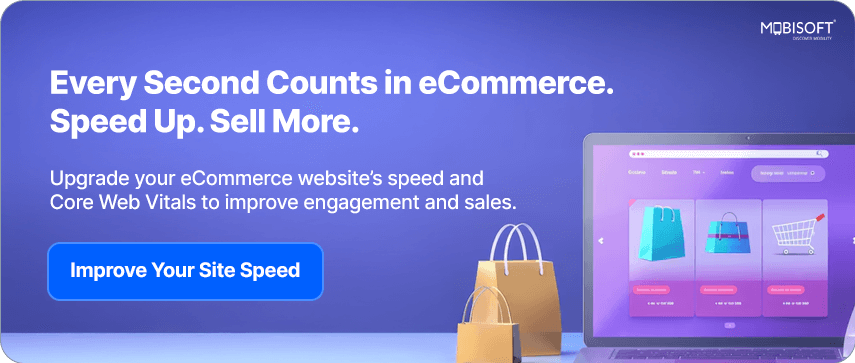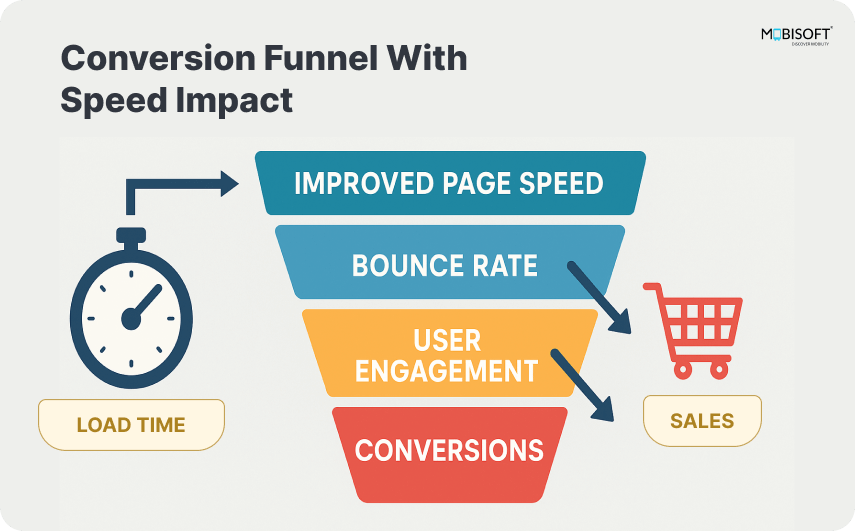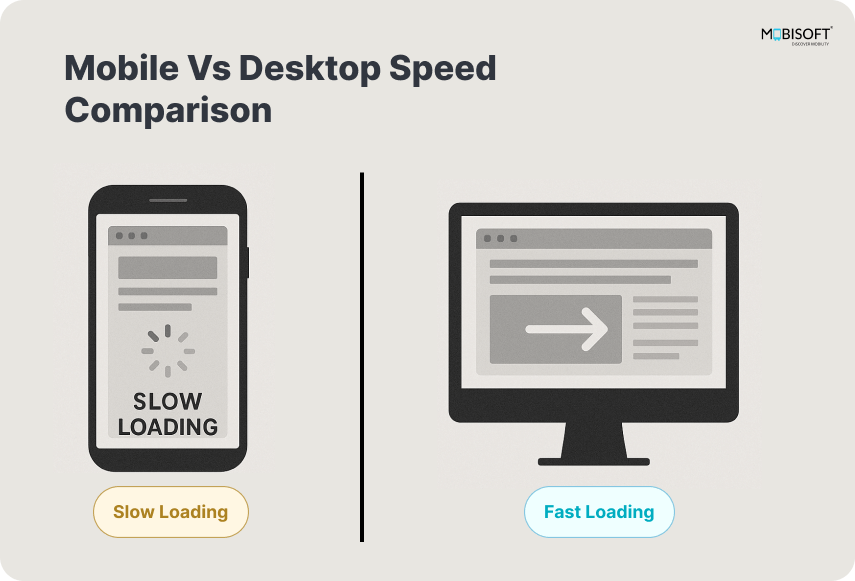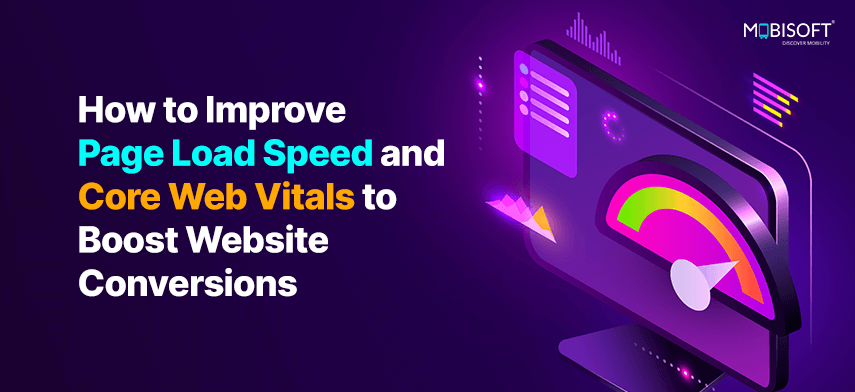Introduction: The Need for Speed
Waiting online? That’s a thing of the past. Visitors expect your website to load fast within a few seconds, max. If not, they’ll move on without a second thought.
Speed isn’t just about convenience. It impacts everything from how high you rank on Google to whether users stay, engage, or convert. At the end of the day, a fast site tells people you value their time, and that matters.
In this guide, we’ll show you why speed is a game changer, how it ties into real business results, and simple ways to make your site faster with proper website speed optimization and more reliable.
Understanding Page Load Speed
Page load speed refers to the time it takes for the content of a webpage to become fully visible and interactive for the user. It involves several phases, each tied to specific user experience indicators used in core web vitals assessments:
Time to First Byte (TTFB)
Time taken for the browser to receive the first byte of response from the server.
First Contentful Paint (FCP)
Time when the first piece of visible content appears on the screen.
Largest Contentful Paint (LCP)
Time when the largest content element (usually an image or text block) is fully loaded.
First Input Delay (FID)
Delay between user interaction and the browser’s response.
Cumulative Layout Shift (CLS)
Measures how much the page layout shifts while loading.
Understanding these metrics is the first step toward diagnosing and fixing performance issues that hurt user experience and engagement.

Why SEO Page Speed Matters for Conversions

The Direct Link Between Speed and Sales
Slow loading websites lose customers, plain and simple. Even a one second delay in page load time can result in a 7% drop in conversions. For eCommerce businesses, that could mean thousands or even millions of dollars in lost revenue annually.
More key data points:
- 1 second load time yields the best conversion rates.
- 3 seconds leads to a 20% drop in conversions.
- Over 3 seconds? More than 50% of mobile users abandon the site.
This direct correlation between page speed and revenue makes performance optimization not just a technical task, but a business imperative.
To build a high performance storefront, our ecommerce website development ensures fast-loading, high-converting stores.
User Experience and Brand Perception
Speed significantly influences how users perceive your brand. Fast websites are associated with trustworthiness and professionalism. On the flip side, slow sites lead to frustration, decreased satisfaction, and an increased likelihood of users bouncing before completing their goals. Abandoned shopping carts, incomplete lead forms, and short session durations are often tied to sluggish site speed.
The SEO Connection: Rankings and Revenue
Google has clearly stated that page speed is a ranking factor, especially with the introduction of core web vitals as part of its ranking algorithm. This means that performance not only affects your current users, but it also determines how many users can find you in the first place.
As load time increases from 1 to 3 seconds, the chance of a bounce increases by 32%. For every additional second of delay, the probability of a bounce grows exponentially.
A fast website:
- Improves crawlability and indexing
- Enhances mobile friendliness
- Increases organic search traffic
- Leads to better engagement and ROI
SEO and speed are now intertwined, impacting everything from your Google ranking to the effectiveness of your marketing campaigns.
You can also Check out our SEO guide for e-commerce stores to increase visibility and conversions. It complements your speed strategy by aligning technical optimization with smarter search visibility planning.
Key Metrics for Measuring Page Speed
Here are some essential metrics to monitor regularly:
| Metric | What It Measures | Ideal Value |
| LCP | Time for the largest element to load | ≤ 2.5 seconds |
| FID | Time to respond to user interaction | ≤ 100 ms |
| CLS | Visual stability during load | ≤ 0.1 |
| FCP | Time for the first content to appear | ≤ 1.8 seconds |
| TTFB | Time for server to respond | ≤ 800 ms |
Recommended Tools for Measuring Page Speed :
- Google PageSpeed Insights
- Lighthouse
- GTmetrix
- Semrush Site Audit
- Pingdom Tools
Common Causes of Slow Page Load
- Large or unoptimized images
- Bloated CSS or JavaScript
- Too many plugins or external scripts
- Slow hosting providers or server response times
- Lack of caching and CDN implementation
- Heavy fonts or uncompressed assets
These issues are prevalent on content heavy websites and e-commerce platforms.
If you’re facing these technical challenges, explore our web development services designed to optimize performance.
Proven Strategies to Improve Page Load Speed

1. Optimize Images
- Compress images using TinyPNG or ImageOptim.
- Use next-gen formats like WebP and AVIF.
- Serve scaled images based on screen resolution.
2. Minify and Combine Code
- Use tools to remove extra spaces, characters, and comments from CSS, JS, and HTML files.
- Combine similar files to reduce HTTP requests.
3. Leverage Browser and Server Caching
- Store static assets locally on a user’s device.
- Set expiry headers for frequently accessed resources to improve page speed SEO.
4. Use a Content Delivery Network (CDN)
- Distribute content across global servers for faster delivery.
- Use CDNs that support auto minification and real time asset optimization.
5. Reduce HTTP Requests
- Streamline your layout.
- Remove unnecessary plugins, third party scripts, and legacy code.
6. Load JavaScript Asynchronously
- Defer non essential scripts.
- Use async and defer attributes to prevent render-blocking.
7. Lazy Load Images and Videos
- Load assets only when they enter the viewport.
- Significantly reduces initial page load.
8. Upgrade Hosting Services
- Choose VPS or dedicated hosting over shared plans.
- Use managed hosting with optimized configurations.
9. Monitor Performance Continuously
- Conduct regular audits using Lighthouse and GTmetrix.
- Track improvements using historical performance data.
Mobile Page Speed Optimization: A Non-Negotiable
More than 60% of web traffic now comes from mobile devices. Google’s mobile first indexing also means that your mobile site is the primary version considered for ranking.
Tips for mobile page speed optimization:
- Implement responsive design.
- Reduce file sizes and simplify page structure.
- Prioritize above the fold content.
- Make buttons and links tap friendly.
To take your mobile performance further, looking to improve mobile speed? Our e-commerce app development services can help.
Case Studies: Real World Results
Revelry
Improved load speed by 43%, resulting in a 30% increase in conversions.
eBay
Achieved a 0.5% increase in "Add to Cart" conversions for every 100ms of speed improvement.
Vodafone
Improved landing page load speed by 31%, which led to an 8% boost in sales.
These examples show that investing in website speed optimization and effective page speed SEO can lead to tangible, measurable business results.
Best Tools for Speed Testing and Monitoring
| Tool | Features |
| Google PageSpeed Insights | Core web vitals, mobile & desktop scoring |
| Lighthouse | Developer centric audits with detailed suggestions |
| GTmetrix | Waterfall breakdown, speed visualization |
| Semrush Site Audit | Holistic performance view with error tracking |
| Pingdom | Global testing locations, uptime monitoring |
FAQ: Page Speed and Conversion Optimization
Q: How fast should my website load?
Ans: Ideally under 2 seconds. Every additional second significantly impacts bounce rates and conversions.
Q: What’s the top cause of a slow site?
Ans: Unoptimized images and heavy scripts are the most common culprits.
Q: Does speed affect my search rankings?
Ans: Yes, Google considers it a major ranking factor, especially for mobile.
Q: How can I test my site’s speed?
Ans: Use Google PageSpeed Insights for a quick overview and Lighthouse for in depth analysis.
Q: Is mobile optimization more important than desktop?
Ans: In most cases, yes. Most traffic and Google’s ranking system are mobile first.
Conclusion & Next Steps
Page speed is no longer optional. It’s a critical factor that influences your website’s ability to attract, engage, and convert visitors. A faster website improves user satisfaction, enhances SEO, increases conversion rates, and contributes to long term brand loyalty through better website speed optimization.
Key Takeaways:
- Speed is directly tied to user trust and revenue.
- Optimizing for core web vitals improves both SEO page speed and user experience.
- Tools like Lighthouse, GTmetrix, and PageSpeed Insights offer actionable insights.
- Continuous monitoring and updates are essential.
Is your website holding back your conversions?
Let Mobisoft Infotech help you unlock its full potential. Our speed optimization experts use the latest performance tools and proven strategies to enhance every part of your user journey.
Continuous monitoring and updates are essential to stay ahead. Emerging tech like voice search also pushes the need for lightning-fast sites. Here’s why voice SEO matters. Keeping up with evolving SEO trends ensures long term performance, not just short term gains.
Explore our performance services or contact us for a personalized audit today.

References
- Victorious: How to Increase Site Speed for Better SEO
- Debutify: How SEO Tactics Boost Conversion Rates
- NitroPack: Site Speed Optimization Guide
- Ryte: How Page Speed Affects Conversions
- Fleexy Dev: Study on Conversion and Speed
- Semrush: Impact of Page Speed on Rankings
- Search Engine Land: Guide to Website Performance
- HelloLeads: Best Practices for Site Speed





 May 28, 2025
May 28, 2025


